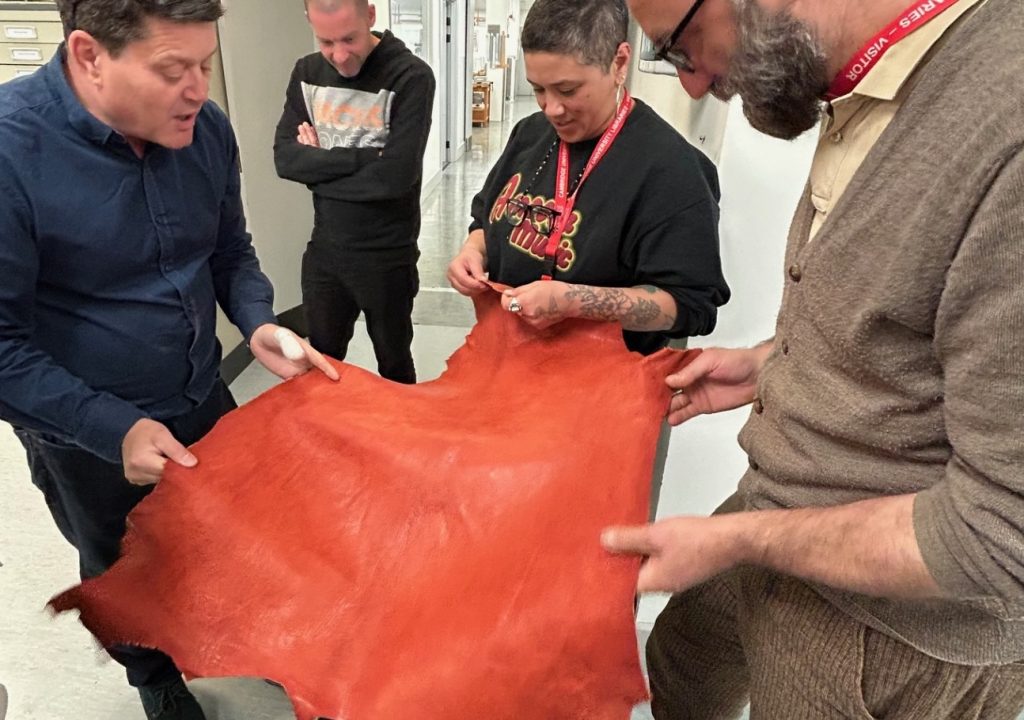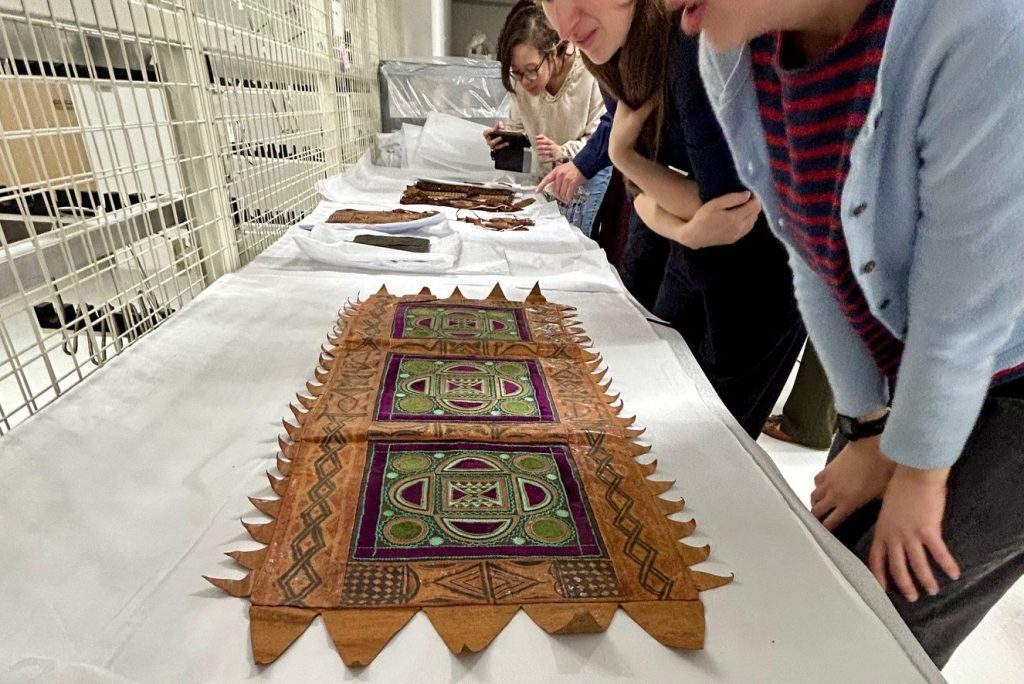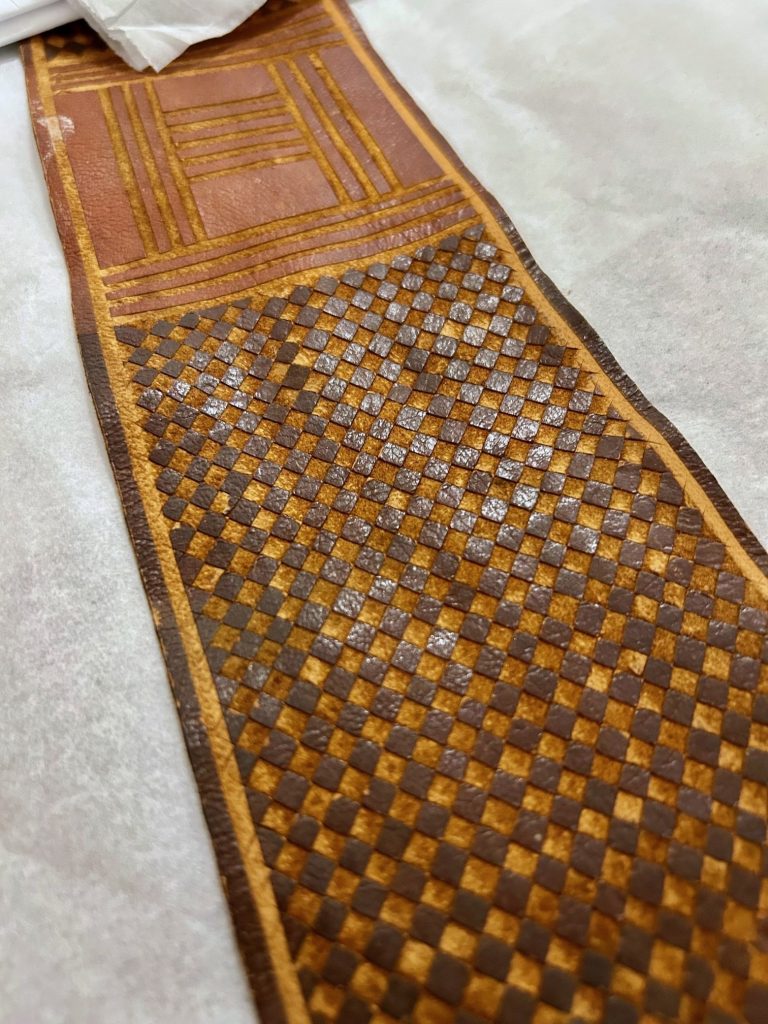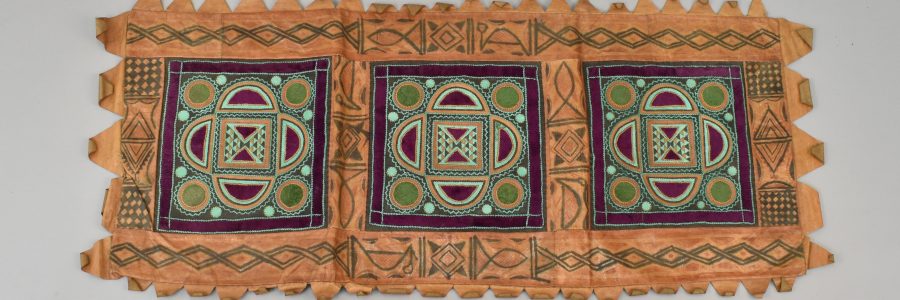
Finding ‘niger morocco’ on a map: a conservation study day on West African leather in Cambridge
This post is by Dr Ayesha Fuentes, an objects conservator and researcher specializing in the care and handling of archaeological and anthropological collections, based at the Museum of Archaeology & Anthropology (MAA) in Cambridge. She is currently a Research Associate for the Hidden in Plain Sight project, a collaboration between MAA, Queen Mary University London and Cambridge University Library.
On 5 June 2025, a group of fifteen conservators, curators, heritage scientists and researchers met in the Conservation Department of Cambridge University Library to discuss West African leather and its relationship to British bookbinding. The workshop was inaugurated by research conducted by Dr Eva Namusoke – Senior Curator, African Collections Futures at the Fitzwilliam Museum – for her upcoming display at the Fitzwilliam Museum (opening 19 Aug). In collaboration with Kristine Rose-Beers – Head of Conservation and Heritage at the UL – and Dr Ayesha Fuentes – Research Associate in Conservation at the Museum of Archaeology and Anthropology – participants were invited to discuss and handle examples of what was once marketed by bookbinders and collectors as ‘niger morocco’goat leather. Yet the name has long been a source of confusion as it has origins in Nigeria – not Niger – and historic trade with Morocco.
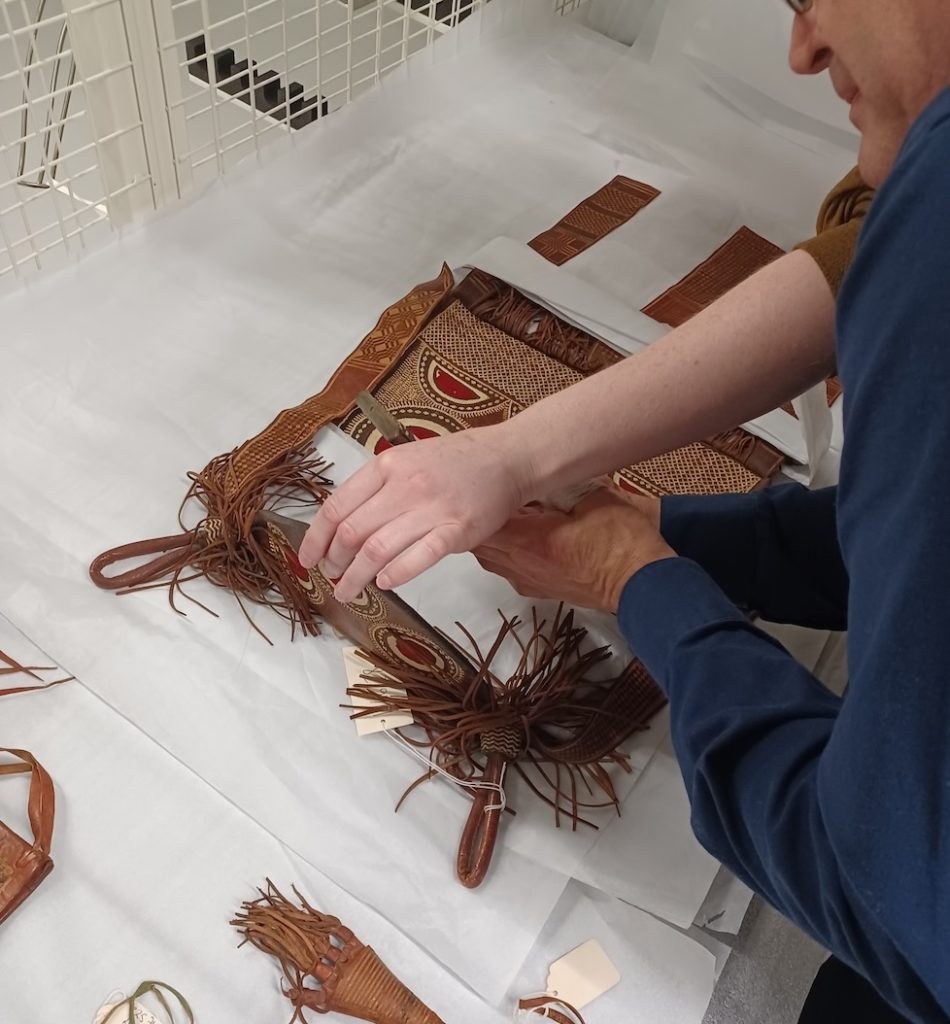
Workshop attendees included conservation colleagues from the UL, Fitzwilliam Museum and Museum of Zoology as well as the Cambridge Colleges’ Conservation Consortium. This event was part of an evolving series on conservation research across Cambridge collections, following last year’s Cambridge Conservators Network seminar at the UL.
Hosted by the UL conservation team, Eva started our day off by discussing the origins of ‘niger morocco’ leather in Sokoto, Katsina and other areas of Northern Nigeria, and described how it came to be valued in the UK. She also addressed the erasure of the skills, labour and knowledge of its originating African craftspeople and the unique relationship of this material to books and collections at Cambridge. Following this, Madison Bennett – PhD candidate at the McDonald Institute of Archaeology and practice-based parchment specialist – gave an introduction to biocodicology and helped frame research questions on the analysis of protein-based materials.
The group discussed how, using our collective expertise, it might be possible to reconstruct histories, trajectories and technologies for West African leather. We discussed practitioner knowledge as well as scientific analysis for proteins, DNA and lipids; what data needs to be collected for each; and the logistics of conducting ZooMS (zoological mass spectrometry) for species identification, including a relative dearth of comparative data on African material culture. We finished the morning by handling books bound in ‘niger morocco’ leather, including a large Qur’an from northern Nigeria. Here already we started to notice characteristic textures, scents and decorative techniques, including a bright green colorant called ‘korino’ by Hausa makers and a method for incising and selectively removing the grain surface of the leather for decorative effect.
In the afternoon, we reconvened at the Museum of Archaeology and Anthropology’s new Centre for Material Culture and Ayesha led a short tour of the stores before visiting objects in treatment for Eva’s upcoming display. These objects are recorded in MAA records as being associated with the Hausa cultural group and collected in northern Nigeria in the early twentieth century by British and Australian military officers and colonial officials. Collections include garments, books, cushions and an incredible-looking bag that will all be on display for six months at the Fitzwilliam Museum after August. Yet while these objects were collected in Northern Nigeria, the Hausa people and their leather-working skill are historically present across a much larger part of West Africa.
UCM Conservator Steph de Roemer was unable to join us, but the group had a chance to discuss the objects being prepared for display, including two undergoing humidification. Steph noted that some dyes were water sensitive and asked by email about techniques for manufacture. Though the group was uncertain about many of the colorants without analysis, the remarkable softness and flexibility of the leather – and its resilience to the technique of selectively cutting the grain layer away for decorative effect – led some to speculate that it was brain or fat tanned, rather than a true leather. A slice in the back of one cushion allowed us to look inside at the reverse of the lacework and its 1mm strips of leather in tidy stitches. A small amount of white leather used in appliqué was also the object of interest: Was it alum tawed locally to be made white? Or was it something from outside the region that had been re-used?
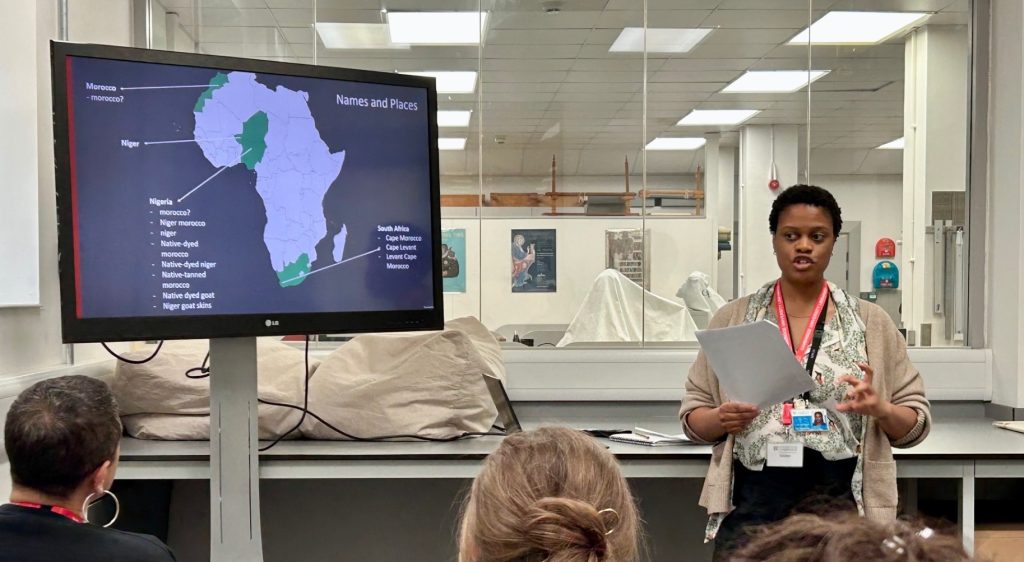
The second half of the afternoon was a short handling session with early twentieth century Hausa leather items from Northern Nigeria in the Cowles Workroom at the CMC. Objects were separated with different tables for Qur’anic materials and household items. The selection included leather-wrapped amulets, riding boots and leggings, a writing tablet with leather fringe, leather in combination with re-used commercial products. Because we were all interested in manufacture and construction, a bag with structural damage revealing techniques for stitching and joining was also included. Similar to the UL, participants were allowed to take photos and handle the objects with clean hands. We discussed documentation and their history of treatment at the museum, and many were interested to hear that these skin products exhibited none of the characteristic instability of vegetable tanned leather (e.g.’ red rot’) and had never been treated with dressings.
We ended our day with a discussion of conservators as researchers, and how we might contribute more to research culture here at Cambridge. We talked about making collections accessible to material research across institutions, and how important handling and multi-sensory data are for cultivating knowledge exchange. Often throughout the day, participants would call to each other to look at, smell or touch something in order to communicate its significance. Moreover, Eva’s curatorial interest in the labour and skill behind these leathers, their durability and artistry resonated with a group of conservation professionals whose work it is to handle, repair, support, document, transport and care for these objects. We ended our day with renewed interest in our network and will see both each other and these materials at the opening of Eva’s display at the Fitzwilliam Museum on 19 August.

